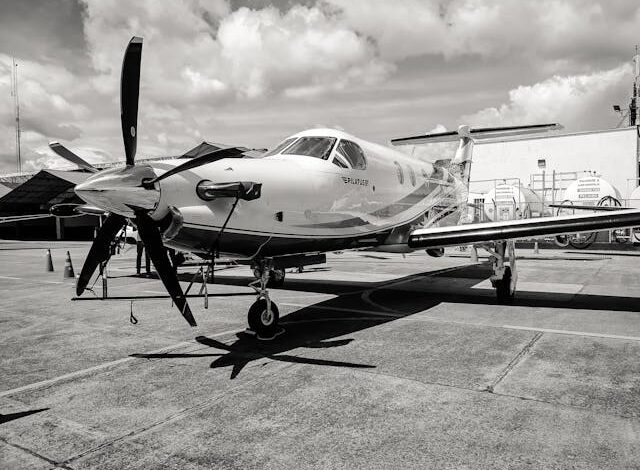6 Things That Make Aircraft Ownership Easier

Having an aircraft marks success and freedom, but it also carries a great degree of responsibility. From simple maintenance to regulatory compliance, aircraft ownership may be complicated if improperly handled. Still, running an aircraft may be a seamless and even fun process with the correct tools, resources, and mentality. Whether you run a fleet or are an individual owner, these six ideas can help you find aircraft ownership easier and more efficient.
1. Hiring a Reputable Aircraft Management Company
Working with a respected aircraft management company is one of the best strategies to simplify aircraft ownership. These companies manage daily operations like flight planning, crew scheduling, hangar placement, and regulatory compliance that accompany running an aircraft. A competent management company serves as your reliable adviser so you may concentrate on enjoying the advantages of ownership while they take care of the operational details. Having specialists handle your aircraft will save time, reduce risk, and guarantee that your asset is kept to the best of standards, whether you fly often or just sometimes.
2. Leveraging Advanced Maintenance Scheduling Software
Non-negotiable and requiring precision and consistency is aircraft maintenance. Software for advanced maintenance scheduling can assist in simplifying this important component of ownership. These systems measure component lifetime, track flight hours, schedule inspections, and notify you when maintenance is necessary. This proactive strategy helps you stay in compliance with aviation rules, reduces the possibility of unanticipated problems, and maintains your aircraft in the best flying shape. These systems considerably ease the maintenance management load by automating formerly manual, paper-heavy tasks.
3. Utilizing Purpose-Built Ground Support Equipment
Daily aircraft operations are much improved by having the correct ground support equipment (GSE) available. Consider an aircraft water cart, a specialized equipment meant to effectively supply potable water to onboard tanks of an aircraft. This saves time on pre-flight preparations in addition to guaranteeing passengers and staff a hygienic water supply. Designed to prevent contamination, high-quality airplane water carts have sanitary hoses, easy-to-use maneuverability. This kind of GSE is only one example of how investing in the correct equipment may help you to simplify everyday tasks and maintain your aircraft ready for any trip.
4. Joining an Aviation Insurance Program with Strong Support
Another key component is a well-organized insurance policy designed especially for aircraft owners. Beyond the clear cash protection, top-notch aviation insurance companies give risk management guidance, claims help, and even pilot training incentives. Certain suppliers additionally give concierge-level service to assist you in navigating difficult circumstances such as legal liability concerns or damage claims. Working with an insurance company that knows your kind of aircraft and flying style gives a degree of assurance and security, therefore relieving ownership of some tension and uncertainty.
5. Ensuring Regulatory Compliance Through Dedicated Advisory Services
Among the most heavily regulated sectors worldwide is aviation. For individual owners, ensuring compliance with FAA (or other governing bodies), international standards, and maintenance protocols can be challenging. Here is where compliance advice services find applications. These professionals guarantee that your aircraft follows all operating and safety rules, assist you in staying up-to-date with changing aviation laws, and handle documentation. They can even get you ready for inspections and do audits. Your aircraft’s lifetime and resale value will increase, and liability will be lowered with appropriate compliance help.
6. Investing in Pilot and Crew Retention Programs
The safety, comfort, and dependability of your flights are much improved by a well-trained, consistent flight crew. Developing close bonds with pilots and cabin personnel is what many aircraft owners find to be part of their enjoyment of ownership. Owners can keep their workforce driven and committed by providing retention incentives, including professional growth, competitive pay, and consistent scheduling. Good communication, easier operations, and a generally improved flying experience follow from stable crew relationships. This expenditure pays off in peace of mind as much as in safety and service.
Conclusion
Owning an aircraft is not too demanding. It becomes a reasonable and profitable venture with the correct infrastructure and support systems in place. From selecting purpose-built tools to employing expert management, every one of the six measures listed above may greatly reduce the duties of ownership. Using a proactive, knowledgeable strategy can help you to enjoy the freedom and prestige of flying on your own terms, free from the often involved hassle. These ideas help aircraft ownership become not only feasible but also rather fun.




